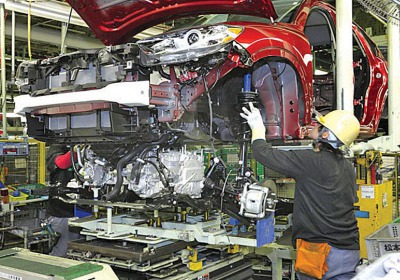Mazda to use regen brakes to boost fuel economy 5 to 10 percent
Mon, 09 Jul 2012
Mazda is adding a fuel-saving technology that harnesses wasted brake energy in the redesigned Mazda6 sedan due early next year.
The approach uses regenerative braking to convert kinetic energy into electricity that is stored in a capacitor. The car later taps that capacitor to power the fuel pump, lights, audio, air conditioning and transmission and engine control systems.
Traditionally, power for those functions is drawn from the engine.
But Mazda's innovation, called i-Eloop, relieves the engine of those duties, allowing it to channel its output more efficiently.
The technology will boost fuel economy "by 5 percent to 10 percent," Seita Kanai, executive vice president in charge of r&d, said during a press event in Japan.
The regenerative braking capacitors will debut in the next-generation Mazda6. Production starts at the Hofu plant in August, and U.S. sales are scheduled to begin in the first half of 2013, a spokesman said.
I-Eloop will be deployed across Mazda's lineup, Kanai said. He did not specify when other nameplates would get the technology.
The Mazda6 is the company's second car to get the full package of Skyactiv technologies, which include direct-injection engines, more efficient transmissions and lightweight chassis and bodies.
The first was the CX-5 crossover, which arrived in spring.
Mazda is busy replacing its lineup with Skyactiv technologies. By March 2016, roughly 80 percent of its vehicles will feature the improvements. That's up from 20 percent this year.
In a step toward that goal, Mazda said that it will double annual production capacity of Skyactiv engines, to 800,000, at its Hiroshima engine plant in October.
In response to higher than expected global demand for the CX-5, Mazda also said it will boost production capacity of the crossover to 240,000 units a year, from 200,000 in August. It now expects global CX-5 sales of 190,000 units in the current fiscal year that began April 1, up from its earlier target of 160,000.
By Hans Greimel- Automotive News

